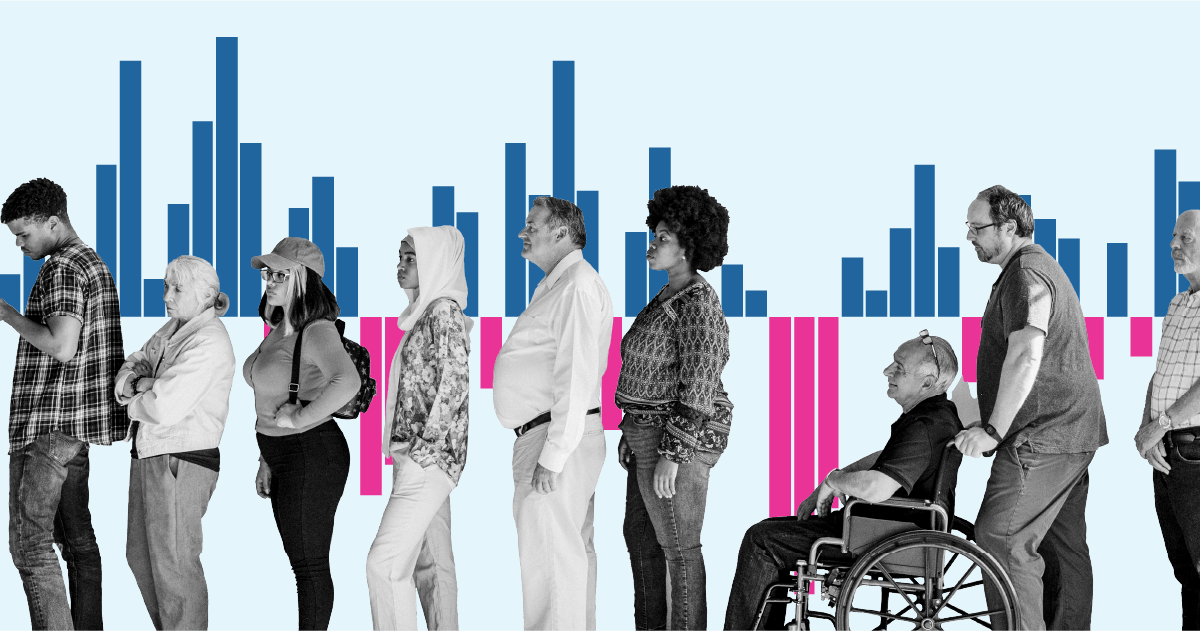By 2100, the United States will be home to 366 million people, according to Census Bureau projections. That’s 32 million more people than in 2022, but it also indicates a slight decline from a projected peak down the road.
The Census Bureau projects America’s population to grow older and more diverse by the end of the 21st century, with immigration and fertility rates driving most changes through 2100.
The Census also projects immigration will be the largest driver of population growth through the rest of the century. Without any new immigration, the Bureau estimates the nation’s population would begin declining in 2024, resulting in approximately 107 million fewer people in 2100 than in 2022. Conversely, it also projects a high-immigration scenario in which the US could have an estimated 102 million additional people by then.
How much is the US population predicted to grow by 2100?
The Census projects the population will grow by 9.7%, or 33 million people, between 2022 and 2100. That’s roughly equivalent to the current population of Texas. According to these projections, the US population will peak at 369 million people in 2080 before declining through the rest of the century.
What are the predicted birth and death rates for the US?
US birth rates are predicted to decline throughout the remainder of the 21st century, from 10.8 births per 1,000 people in 2023 to 8.5 per 1,000 in 2100. Meanwhile, the death rate will increase from 8.5 per 1,000 people in 2023 to 11.9 per 1,000 in 2100.
Fertility rates have generally declined in the US since the late 1950s, and the share of the population over 65 has increased. The Census expects these trends to continue, resulting in a death rate that exceeds the birth rate by 2038. By 2100, the Census Bureau estimates there will be 1.2 million more deaths in the US than births.
How is immigration expected to change the total US population?
The Bureau expects immigration to drive population growth through the remainder of the 21st century. In every projected year, the number of people moving into the US is expected to exceed the population change that would result from births and deaths alone.
How could US demographics shift?
The US population is projected to get older and more diverse through the rest of the 21st century. Within a decade, seniors will outnumber children, and by 2050, the non-Hispanic white population will be less than half of the US population.
Subscribe to get unbiased, data-driven insights sent to your inbox weekly.
What is the predicted median age of the US population?
The median age in the US is expected to increase to 47.9 years in 2100, up from 38.9 years in 2022. As the population ages, the Census expects there to be more seniors than children in the US in 2100. By that time, 29.1% of all people in the US will be 65 and over, compared with 16.4% under 18. In 2022, 17.3% of the population was 65 or over, and 21.7% were under 18. The two groups are expected to each constitute 20% of the population in 2030.
How will the ethnic makeup of the US change?
The Census Bureau provides race and ethnicity projections through 2060. By that point, the non-Hispanic white, Hispanic, and non-Hispanic Black populations will remain the three largest race or ethnic groups nationally. The non-Hispanic white population will make up less than half of all people in the US, while the Hispanic or Latino population will grow to more than a quarter.
The non-Hispanic white population is projected to decrease from 58.9% in 2022 to 44.9% in 2060. The Hispanic or Latino portion of the population will increase the most of any group, from 19.1% in 2022 to 26.9% in 2060. The non-Hispanic Black population is expected to remain around 13%, growing from 12.6% in 2022 to 13.4% by the end of the century.
The Bureau makes population projections based on birth, death, and international migration patterns. The data in this article is from the 2023 National Population Projections “main series” (also known as the “middle series”), which the Census Bureau considers the most likely outcome of the scenarios it has projected.
Find out more about our aging population and get the data directly to your inbox by signing up for our newsletter.
Related population articles
Read data analyses written by the USAFacts team.
Page sources and methodology
All of the data on the page was sourced directly from government agencies. The analysis and final review was performed by USAFacts.
Census Bureau
2023 Population Projections



